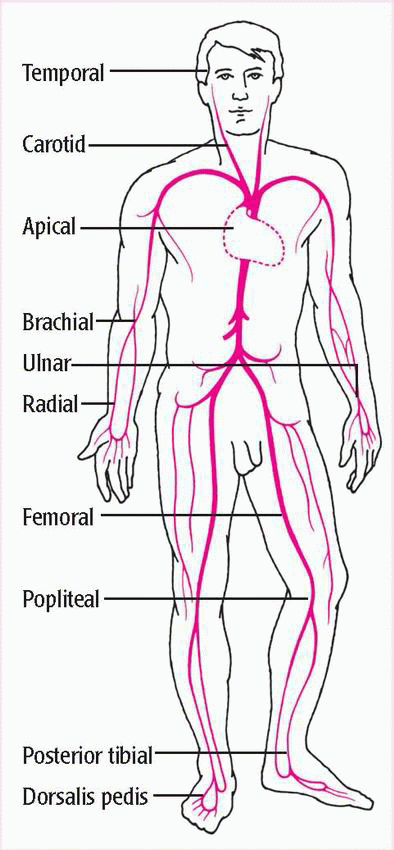
Ventricular contraction causes the left ventricle to move both downward and laterally (. The table below outlines the differences between apial and radial pulse. As the right ventricle enlarges, it may cause the apical impulse. The main difference between apical and radial pulse is that apical pulse is felt over the left side of your chest over your heart, whereas radial pulse is felt at your wrist. Jessie Szalay contributed to this article.Apical pulse is felt over the left side of your chest over your heart, whereas radial pulse is felt at your wrist American Heart Association: All About Heart Rate (Pulse).Children 10 years and older, and adults (including seniors): 60 to 100 bpm.Children 7 to 9 years old: 70 to 110 bpm.Apical consonant, a consonant produced with the tip of the tongue. Apical (dentistry), direction towards the root tip of a tooth. Apical (chemistry), a position in certain molecular geometries in chemistry. Children 5 to 6 years old: 75 to 115 bpm Apical (anatomy), an anatomical term of location for features located opposite the base of an organism or structure.Children 3 to 4 years old: 80 to 120 bpm.Children 1 to 2 years old: 80 to 130 bpm.Infants 1 to 11 months old: 80 to 160 bpm.Newborns up to 1 month old: 70 to 190 bpm.The following are healthy pulse rate guidelines recommended by The National Institutes of Health: Generally, people with good cardiovascular fitness, such as athletes, experience a lower resting heart rate, sometimes 40 or below. Other factors can affect resting heart rate, too, including age, body size, fitness level, heart conditions, whether you're sitting or standing, medication, emotions, and even air temperature. This is primarily due to the fact that the male heart muscle is stronger. Women tend to have a slightly higher heart rate than men the average resting heart rate in women is in the mid-70s, while it is only about 70 in men.
APICAL PULSE LOCATION HOW TO
For the pulse location, how to locate the pulse, and reasons for the using the site, see the table below. Apical pulse assessment is indicated for clients whose peripheral pulse is irregular and for client with cardiovascular, pulmonary and renal disease.

What is an average pulse rate?Ī normal resting heart rate for adults ranges from 60 to 100 beats per minute (bpm), according to The Mayo Clinic. Apical pulse is usually used for infants and children up to 3 years of age. To take your pulse at your neck, do the same thing but lay your index and third fingers on the neck in the hollow beside your Adam's apple or windpipe. Multiply the count by four to calculate the number of beats per minute. When you feel the thump of your pulse, count the beats for 15 seconds. Simply lay your index and third fingers on the inside of your wrist below the base of your thumb, between the bone and the tendon.


Other locations include side of the neck (carotid pulse), groin (femoral. Taking your pulse is easy, especially if you do it at your wrist or neck. The most convenient location is the radial section of the wrist (radial pulse). The apical pulse provides information on count, rhythm, strength and quality of the heart. Short of performing an electrocardiogram, doctors find that taking the apical pulse is the most accurate, noninvasive way of assessing cardiac health. (Image credit: dragon_fang (opens in new tab) Shutterstock (opens in new tab)) The result of the study is to determine the technique measuring the apical pulse rate, Hargest (1974), starting point 0 is not proved.

identify the PMI by location, diameter, amplitude. Another common place to take your pulse is the carotid artery, found on the neck between the wind pipe and neck muscle. This is where you can find the Apical Pulse and usually can find the Point of Maximum Intensity (PMI).


 0 kommentar(er)
0 kommentar(er)
